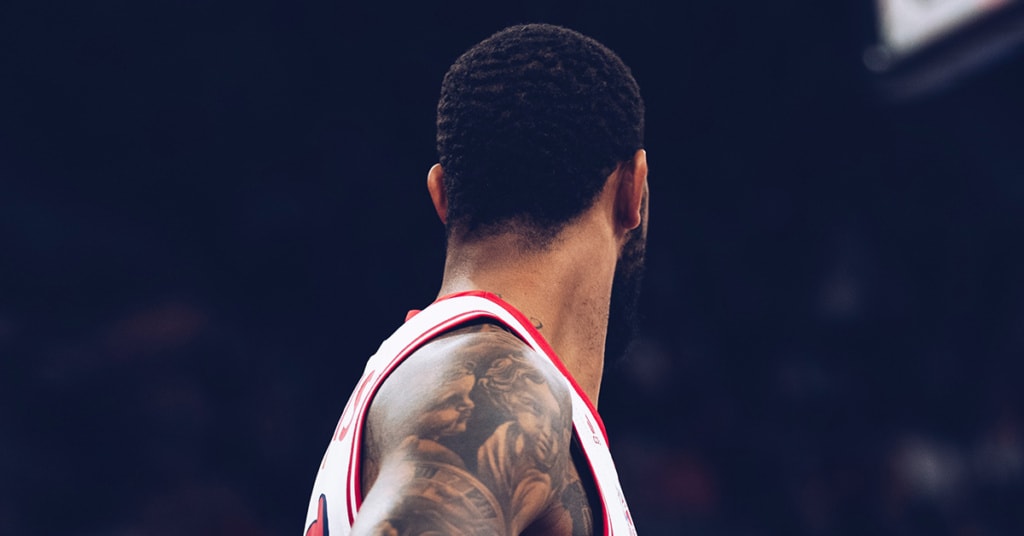Sports Marketing Trends for 2021

The uncertainty around the COVID-pandemic continues to limit future planning as we look ahead to 2021, and sports marketers especially are currently assessing what to take away from a mercurial 2020 in terms of shopping tendencies, audience habits, and the impact of modified live events.
So, while the world is clearly still in flux, we’ve taken a look at some of this year’s trends that we think will stick in the sports marketing realm and what we expect to be important factors to consider in 2021.
Political Overlap
This year will be remembered for many things, but in the sports world, 2020 will definitely be the year it became commonplace for athletes and teams to take political stands and speak out on issues like social justice. And while there is highly charged debate as to whether this has positively or negatively affected sports viewership this year, one thing is clear – we don’t anticipate it subsiding in the near future.
Now more than ever, athletes want to make a difference outside of games and practices. Their large, engaged social media accounts – and increasing support in the form of flexibility and opportunity from their teams and leagues – give them the platform to make an impact on important societal issues.
Brands looking to partner with athletes (and influencers in all sectors) have more substantive content to choose from than ever before. Whenever we talk to agencies about matching a brand up with one of their athletes, our first questions are “What are your athletes interested in? What do they stand for? What do they want to do after their playing days?”
If you’re not getting substantive answers, then the athlete is probably not right for your brand. Given the right fit, athletes can definitely be valuable to your integrated marketing plans, but make sure there is substance and purpose to any partnerships.
And remember that college players could be an option for your brand as well, thanks to the NCAA recently opening rules around student-athletes profiting from their name, image, and likeness (NIL).
Stand for Something
A trend across the marketing landscape is consumers’ desire for brands to not only talk about making a difference but to back that up with tangible action. That can mean a financial or resource investment, but the key factor is building trust by demonstrating that you care about something more than profit and growth: you need to impact issues that are important to your audience.
Clearly, and justifiably, social justice issues have dominated in 2020. The importance of corporate social responsibility isn’t going to wane, so it’s important that companies focus on their own diversity, equity, and inclusion.
It’s also clear that especially Gen Z really values sustainability and are environmentally conscious in many of their purchasing habits. Some athletes are even speaking out on previously taboo topics in the sports world like mental health.
Bottom line, make sure you are making business decisions that positively impact your consumers, employees, and communities: as Pernod Ricard CEO Ann Mukherjee said on a recent Adage podcast, we need to replace the focus on “return on investment” with “return on responsibility.”
TV Ratings Decrease But Rights Deals Increase
One of the most debated stories in sports during 2020 has been the decline of TV ratings across every major league.
2020 Sports TV Ratings (via Sports Media Watch)
- MLB World Series: -32%
- NBA Finals: -49%
- NHL Stanley Cup Finals: -61%
- NFL Regular Season (through Week 5): -13%
- Kentucky Derby: -43%
- US Open Tennis: -45%
- US Open Golf: -42%
This comes with the next wave of negotiations set for 2021, though some expect rights deals to continue to increase in value.
There is considerable debate about why we’ve seen such rampant declines – including some claims that athletes taking political stands has led to lower ratings – but one thing is clear: live sports is really the only appointment viewing left.
So whether that is spending big dollars to advertise during broadcasts (Buffalo Bills ratings have bucked the NFL’s trend and actually increased this fall in Western New York – thanks largely to their positive start), sponsoring one of the many new in-game opportunities that are taking fans closer to the athletes on the field, or utilizing more grassroots efforts like timing your social media pushes with targeted, relevant content around live games, being involved with sports events have tremendous value in the equation of how to reach your consumers.
One important note here is that without gate receipts, all teams are scrambling for other revenue solutions, so now is a great time to be pitching new and fresh sponsorship ideas.
And if traditional sports are too expensive and crowded, the e-sports and sports gambling spaces continue to gain traction and sophistication (legislatively on the gambling side this election season but also business-wise as both industries rapidly mature), providing increasingly valuable alternatives.
Shopping in Micro-Moments
The barrier to online purchasing no longer exists. This is one of many trends that has been significantly advanced by the COVID-19 pandemic: consumers will buy anything on their phones at just about any time. This new “micro-moments” trend means that shoppers are making more transactions through their smartphones, especially while watching TV, traveling, working, etc.
This is good news for sports marketers: more and more fans are scrolling through their phones while they’re watching games. So a smartly timed email blast is a great opportunity to put out conversion-based messaging – just be sure you’re authentically and constructively hooking your communications around events and news relevant to your audience.
There is No Brand Loyalty
We are hearing more and more about consumers’ increasingly eroding brand loyalty. According to Forbes, “75% of consumer have tried different stores, websites, or brands during the pandemic” – and “60% of those expect to adopt new brands and stores into their post-pandemic routines.”
You should be constantly nurturing your consumers and maintaining a community with your audience – not just with sales messages, but through content that adds value to their lives while also complementing your overall goals.
Across the board, brands are going direct-to-consumer, thanks mainly to the unreliability of brick-and-mortar shopping. So if you haven’t adopted an e-commerce strategy in 2020, it should be atop your priority list for 2021 – knowing that you can’t just set up a platform and expect people to start buying from your website without an integrated plan to launch and promote this new service.
Transparency and Authenticity
These are not new buzzwords for marketing. But the pandemic has definitely taught us all that imperfections are not only acceptable but welcome. Thanks to the proliferation of incessant video calls with our coworkers and clients, and event artists and entertainers “performing” from home, we’ve been invited into just about everyone’s houses over the last eight months. It’s clear consumers care more about transparency than perfection. So keep that in mind with all of your communications efforts in 2021 and beyond.
